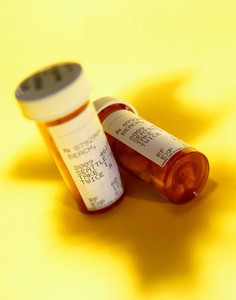Researchers from Nigeria’s Obafemi Awolowo University have found generic metformin sourced in the country to be ‘not inferior’ to originator metformin [1].
Metformin is key in the management of type 2 diabetes mellitus but comes with an additional financial burden, particularly with the use of brand-name products. The availability of generics allows for generics substitution reducing the cost of treatment. However, only generics that offer similar bioavailability with the originator should be considered.
The authors therefore carried out a study to assess the bioequivalence of generic metformin tablets within Nigeria.
Metformin tablets selected from the Nigerian market were appraised for quality following British and United States Pharmacopoeia guidelines. An in vivo bioequivalence study in healthy volunteers was carried out for generics and the originator brand-name metformin in an open-label, 2-arm, 2-treatment crossover fashion with a 1-week washout period. Blood samples were collected 0, 0.5, 1, 1.5, 2, 3, 4, 6, 8, 10, and 24 hours post-dose. Plasma concentrations of metformin were analyzed using a validated high-performance liquid chromatography (HPLC) method and pharmacokinetic parameters were obtained using a non-compartmental approach. The bioequivalence of the formulations was assessed based on guidelines from the US Food and Drug Administration, Centre for Drug Evaluation.
Nine generics met the quality assessment standards and the in vivo bioequivalence study was achieved in 17 healthy volunteers. The mean values for Cmax, Tmax, AUC0–24, and AUC0–∞ with the originator brand-name version of metformin were 0.43 ±0.14 μg/mL, 1.35 ±0.46*h, 2.03 ±0.68 μg/mL*h and 2.63 ±1.11 μg/mL*h, respectively. For the generic drug product, the values were 0.44 ±0.13 μg/mL, 1.41 ±0.59*h, 2.04 ±0.68 μg/mL*h, 2.85 ±1.37 μg/mL*h. The 90% confidence intervals (CIs) for the test formulation/reference formulation ratio for Log Cmax, Log AUC0-10 hr and AUC0–∞ were within the bioequivalence limit of 80% to 125% (95.8−106.8, 94.8−105.5 and 96.3−108.4, respectively).
The authors therefore concluded that the ‘study found the bioavailability of the test product was non-inferior to innovator metformin’.
The results are in agreement with another study in Taiwan, which found that switching between different generic brands of metformin is a good cost-effective approach that does not adversely affect the quality of care for patients with type 2 diabetes [2].
Conflict of interest
The authors of the research paper [1] declared that there was no conflict of interest.
Abstracted by Adebanjo Jonathan Adegbola, Department of Pharmaceutical Chemistry, Faculty of Pharmacy, Obafemi Awolowo University, Ile-Ife, Nigeria.
Related article
Nigeria needs to combat fake drugs and ageing facilities
References
1. Adegbola AJ, Awobusuyi OJ, Adeagbo BA, Oladokun BS, Owolabi AR, Soyinka JO. Bioequivalence study of generic metformin hydrochloride in healthy Nigerian volunteers. Journal of Exploratory Research in Pharmacology. 2017;2:78-84.
2. GaBI Online - Generics and Biosimilars Initiative. The non-financial benefits of generics substitution [www.gabionline.net]. Mol, Belgium: Pro Pharma Communications International; [cited 2017 Dec 1]. Available from: www.gabionline.net/Generics/Research/The-non-financial-benefits-of-generics-substitution
Permission granted to reproduce for personal and non-commercial use only. All other reproduction, copy or reprinting of all or part of any ‘Content’ found on this website is strictly prohibited without the prior consent of the publisher. Contact the publisher to obtain permission before redistributing.
Copyright – Unless otherwise stated all contents of this website are © 2017 Pro Pharma Communications International. All Rights Reserved.








 0
0











Post your comment